PPC
Using Geotargeting to Get Customers Back in Stores

Geotargeting has opened many doors for marketers and advertisers alike during Covid. After all, it helps focus on a specific market, resulting in more relevant ads, increased campaign value, and a better ROI.
This piece will discuss the ins and outs of geo-targeting in advertising, explore best practices, and look at some examples of targeting we have run internally.
How Geotargeting Can Boost Foot Traffic to Your Business
Most digital advertising publishers have solutions to help you bring customers to your stores whether that’s driving foot traffic to particular shops, highlighting in-store sales with redeemable coupons, or promoting specific products that are available for click and collect.
Shoppers say convenience is an essential sales funnel step they consider when they choose whether to buy an item online or in-store. In the physical world, convenience can mean a nearby store location. In the digital world, convenience can mean a consumer can easily recall a brand that will satisfy their online retail needs, and they can smoothly navigate the website.
Source: Google/Kantar, Global, Increase traffic and conversion through better customer experiences, n=33,500 consumers 16+ who have shopped online across 38 countries, April-May 2019.
In our post-pandemic environment shoppers are going back into stores and UK retailers will need convenient locations to drive traffic. Geotargeting allows business owners and digital marketing specialists to personalize their paid media ads by including local references on your landing pages, which creates a custom experience for potential customers. There are many different variables to consider when advertising, but creating geofences around specific areas can be extremely effective.
When you start tracking your campaign performance by location, you’ll be able to measure trends and hyperlocal areas that allow you to maximize your return on ad spend.
Why Should I Be Taking Advantage?
Let’s see what Google has to say about their own Local Searches, in order to better understand the potential of Location Targeting and Local Pay-Per-Click (PPC) ads.
According to stats, 75% of people who find local, helpful information in search results are much more likely to visit the physical stores that appear in their search results.
Almost three-quarters of people who search on their smartphone for a local solution nearby will visit a related business within a day of their search, and 28% of those searches result in a purchase.
Google has seen explosive growth in searches like “open,” “now,” and “near me” since the COVID pandemic which helps to reflect the shifting desires of customers in finding more immediate results and solutions due to reduced traveling allowances.
Online platforms and devices like mobile phones and tablets have provided the ability to look for a solution as fast as possible, thus increasing the number of local searches. Being present in front of a prospective customer with the right message at the right time can serve to help grow your business rapidly!
How Can You Geotarget?
There are different ways to geotarget effectively to reach more potential customers.
Reaching Your Geographic Audience In Google Ads
There are two options when setting up your desired audience based on geo in Google Ads:
- People in, or who show interest in, your targeted locations
- People in or regularly in your targeted locations

Source: Google Ads – Location Screenshot
Google Ads recommends the first option and so do I, although you should always review based on your business and campaign.
The ability to target people with an interest is particularly helpful. Someone researching a trip can come across your retail store, pay a visit, find a product they like, and become a repeat customer online.
Along with the recent changes, Google Ads has decided to not allow brands to exclusively target people in a geographic location (for now). However, there is a way to get around this. To block people outside the region from seeing your ads, simply exclude all other areas from seeing your campaign. That way, you still reach your desired market.
Geotargeting In Facebook Ads

Source: Meta
You can easily set location targeting on Facebook by navigating to your FaceBook page, clicking the blue “Promote” button on the left, selecting “Promote Your Page,” and choosing to edit the Audience selection.
This will set the audience for your entire page. If you go into Facebook Ads Manager, there you can choose a geographic location under the “Audience” at the Ad Set level. Generally, when you start a campaign and choose your primary goal, such as brand awareness, location targeting is the next option.
Location Targeting In Microsoft Advertising
Microsoft Advertising (formerly Bing Ads) allows brands to advertise on Bing, AOL, Yahoo, and other sites. You can add geotargeting to your Microsoft Advertising campaign by clicking “Campaigns” at the top of the page, opening the campaign, and clicking “Settings.” Then click “Edit Location Targets” next to Location, select the locations you want to target (or the locations you want to exclude), and then who you want to see your ads. Like Google Ads, you get a choice:
- People in your targeted locations
- People who search or view pages for your targeted locations
- Both of the above groups
Integrating Geotargeting
With all of the above platforms, you have the option to use other factors to create your ideal audience. Using geo-targeted ads does not mean you cannot use other qualifiers like search intent, devices, interests, and demographics. Layering geotargeting in with some of these other elements actually makes your ads more effective because you create an ideal audience that is most likely to convert.
You can also use geographic retargeting ads to display ads to people that are in the area and have previously visited your website. This type of PPC advertising can be extremely effective when used properly.
Once you have started a geographic advertising campaign, you can begin reviewing location data on who has viewed your ad. Based on these metrics, you might want to alter your campaign or adjust the targeting. This is one more opportunity to learn about your audience and what’s working in your marketing.
Use Local Signifiers Wherever Possible
If people are including specific areas in their search query, such as “web design in maidstone,” or even if they are searching without including the geo, it helps to appear local. Personalizing your ads for local audiences enhances your connection with the customer and increases the chances of conversion.
There are several ways to do this. First, you can use dynamic keyword insertion to seamlessly insert the names of your targeted locations within your Google Ads. This allows you to personalize your ads based on people’s searches. So if someone searches “web design Kent,” they will see an ad that includes the words “web design in Maidstone.” However, if they had typed similar terms like “web design London,” your ads can change to reference “web design in London.” Do you see how helpful that can be?
I’d also recommend using a local phone number to back up your geo ads. No one likes calling a 0800-number, so get a local number through your Google account that can forward to your business. This has a huge impact on generating phone leads because people are much more comfortable calling a local area code.
Lastly, when you write copy for your ads, think about the local perspective. Make references to location, weather, local events, and other ‘inside knowledge’ that will appear to the particular group of people in that area.
Running geo-targeted ads just makes sense for many brands, small to mid-sized to multinational. This type of advertising allows your business to maximize effectiveness and return on investment by displaying ads to customers where they are most likely to convert.
If you’re not sure about using geography as a factor in advertising, you can always run a test. Run a small campaign targeting a specific postcode or city. Monitor your performance and use what you learn in this test to make adjustments for a bigger campaign.
Wrap up
Advertisements are always better when they’re relevant, and there’s arguably nothing that hits closer to home than writing about a person’s home—or at least their home county or city.
When you’re creating advertisements, there are many ways you can go about making them geographically focused. The benefits are plentiful, and the techniques for making it happen are also in large supply. Keep the following in mind:
- Geotargeting is popular because it’s easy to do and it’s proven to work, just like all targeted marketing techniques.
- Geotargeting can facilitate foot traffic through exclusive deals, local limited-time offers, and campaigns focused on differentiation.
- Geotargeted ads can be created manually, via platforms like PPC, and through coding techniques like server redirects.
- Targeted ads are nothing new. We often think of target demographics by their age, gender, or buying habits. However, there’s a lot of potential to target markets based on their location as well.
To excel at paid search you must ensure you understand your audience and that you plan this understanding into your campaign structure across your marketing strategy. This is where we at Reflect Digital, can take your search marketing to the next level.
PPC
20 Neuromarketing Techniques & Triggers for Better-Converting Copy
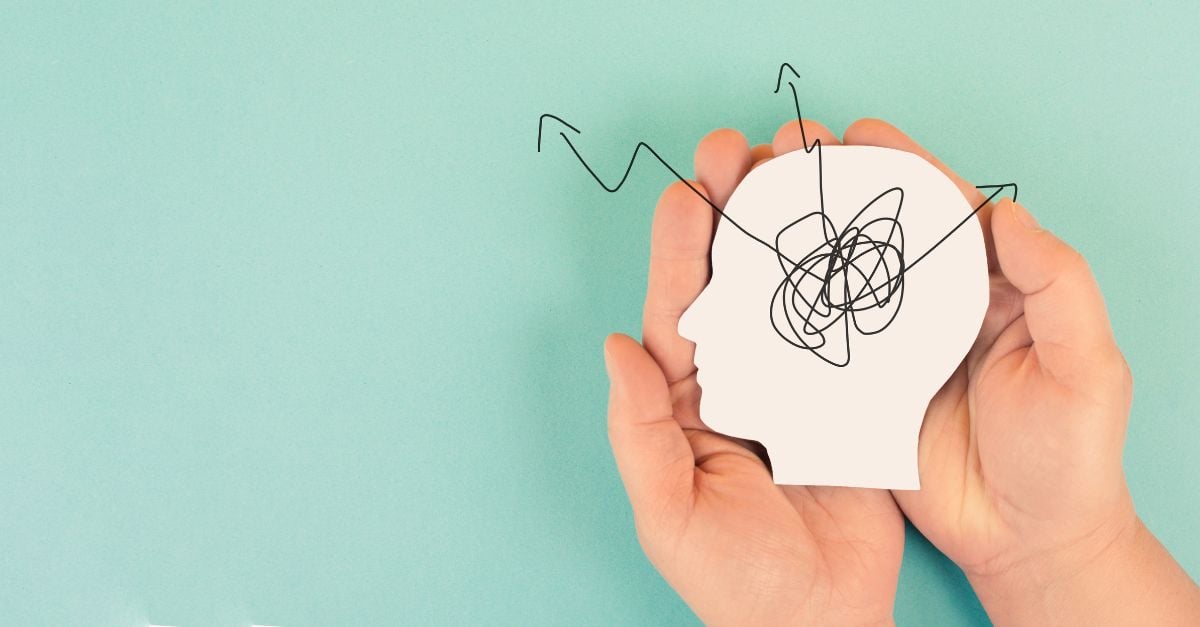
You know it’s emotions, not logical reasoning, that drives decisions, right? By evoking a particular emotion in consumers, you encourage them to take a desired action.
To elicit that emotion, you need a trigger. Where do you get that trigger? By implementing certain psychological principles to your marketing message.
Expert work with all those psycho principles in content is known as neuromarketing, and you’re on the right page to learn how to make the most out of it.
Contents
What is neuromarketing?
Neuromarketing merges neuroscience, psychology, cognitive science, and marketing to understand and influence consumer behavior. It uncovers subconscious and emotional factors impacting choices.
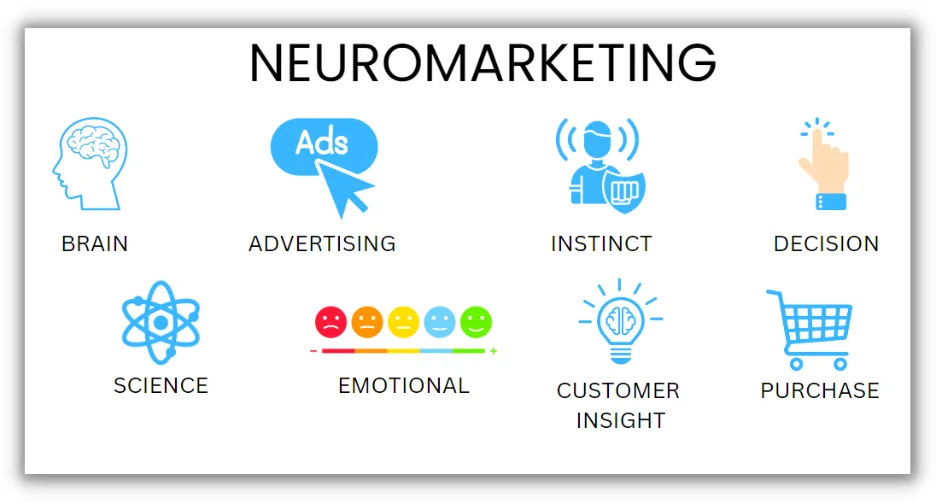
Specialists use neuromarketing techniques to study the human brain and predict decision-making behavior. While critics insist neuromarketing is outdated and manipulative, it still benefits those defending it.
🧠 Speaking of neuromarketing… Get our free guide >> 26 Brilliant Ways to Use Psychology in Your Copywriting (with Examples)
Why use neuromarketing?
Why apply neuromarketing techniques to your copywriting and other marketing activities? Here are some benefits:
- Better understanding of consumer behavior: Neuromarketing unveils emotions, attention, and memory triggers in consumer behavior, thus enabling the creation of impactful marketing messages.
- More effective ways to optimize website design: By studying eye-tracking data and user behavior, you can optimize design elements to encourage desired actions.
- Improved personalization and targeting: Uncover individual preferences and emotional triggers to tailor messages and offers for specific consumer segments.
- Enhanced content creation: Understanding how the brain processes information helps you craft compelling stories that evoke emotions and drive engagement.
Numbers speak volumes. According to the stats, neurological engagement can increase advertising effectiveness by up to 19%. We also know that 63% of users remember brands that tell stories, and 74% of consumers trust businesses more after reading positive reviews.
Neuromarketing examples in copywriting
You don’t need to be a scientist. By analyzing research insights, you can identify neurological responses, emotional triggers, and attention patterns influencing your target most. Apply them to tailor your overall marketing strategy and drive purchasing decisions.
Here are some examples of neuromarketing in action.
1. Two odd numbers in headings
The brain loves numbers: They make content more digestible and provide order to chaos.
Why two numbers? To double the effect: The first one grabs attention, and the second one explains why read the content.
Why odd numbers? It’s about psychology again: Even numbers look friendlier, while odd ones are more thought-provoking. It doesn’t mean you should use only the odd numbers. Consider the effect (emotion) you want to evoke with your content.


2. Questions in subheads
Online readers scan the content to understand if it’s what they need. Format subheads as questions to clarify what readers will learn, spark curiosity, and appeal to FOMO.
Questions encourage scanners to continue the investigation to ensure they haven’t missed anything and satisfy their social instinct.
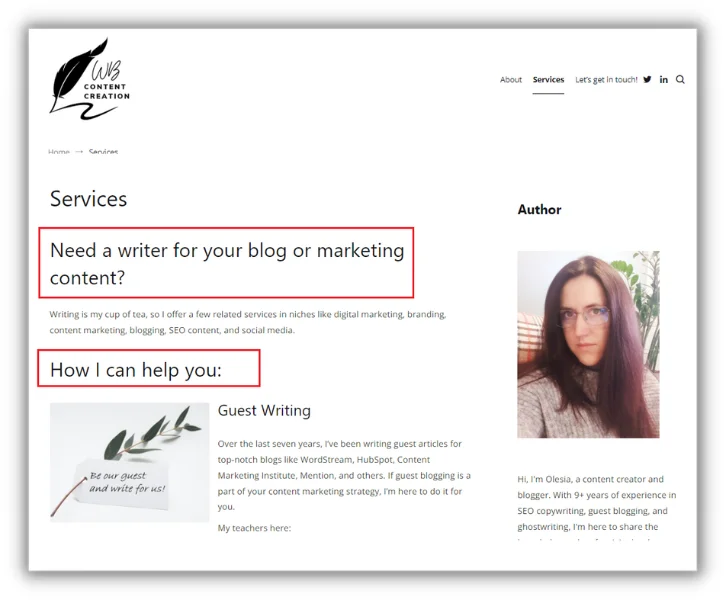

3. The Socratic method in introductions
Post three questions or statements in a row to engage users in communication.
Why three?
The human brain grasps three the best, so the sequence of three makes it easier to remember the information. Writers do love the Rule of Three: It builds the rhythm and keeps readers glued to your message.


4. Power words and active verbs in content
Power words are persuasive and descriptive. They trigger an emotional response, make readers experience different states, and push them in particular directions.
Power words are adjectives indicating and explaining your statements. Like these:
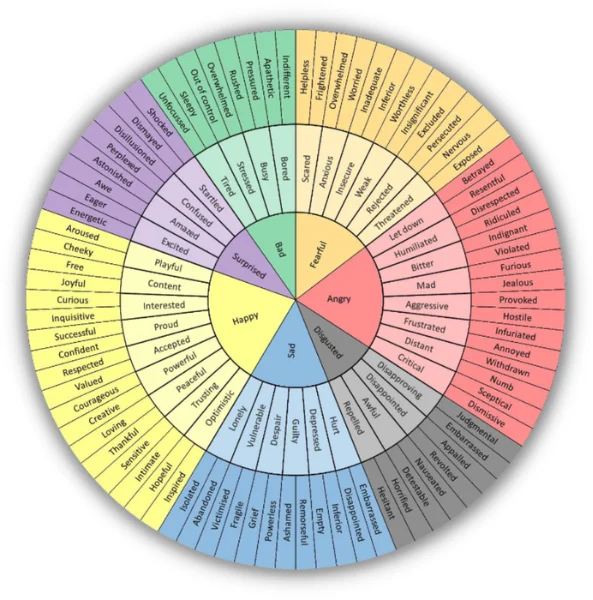

This wheel chart by Geoffrey Roberts shares 150+ emotion-triggering words you can use in your copies.
Also, power words are strong verbs that add action to your message.
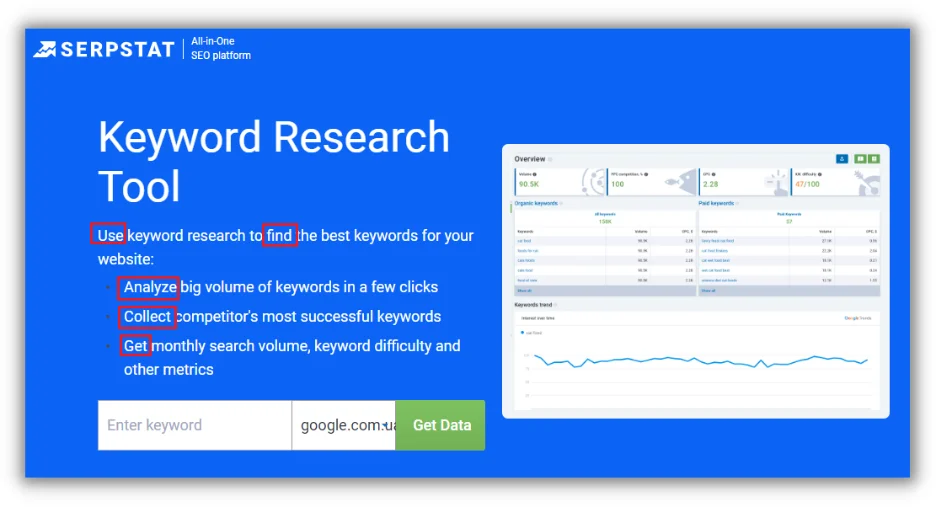

📚 Free guide download >> 135 of the Best Words & Phrases for Marketing with Emotion
5. Sensory language when appropriate
Sensory words are lexical items appealing to the human physical senses. When reading the content with such words, users “see,” “hear,” “touch,” “smell,” or “taste” it.
Sensory words are powerful because they paint scenes in readers’ imagination. They activate the somatosensory cortex, making us recognize these words faster. Sensory words make readers feel as if they are in your story, thus remembering your message better.


Remember to use these principles ethically and transparently, respecting consumer trust and expectations.
20 neuromarketing principles to encourage desired actions
With the above emotional triggers in mind, include the following neuromarketing principles in your copywriting to make it work.
1. Authority
Position your brand as an industry expert through research findings, data, and credible collaborations.
Why do you think influencer marketing works? Users subconsciously believe famous people can’t go wrong because they choose the top products/services for themselves.
But: Authority isn’t only about top celebs with millions of subscribers on social media. Think of micro- or nano-influencers: They have the most loyal audience. Collaborate with experts in your niche: CEOs, top managers, or specialists who know what they talk about.
2. Common enemy
Struggling with a common enemy unites people. It’s not only about physical enemies but pains, complexes, or bad habits, as well. Concepts like hunger, poverty, diseases, or climate change are also here.
What’s your brand’s mission? Is it socially responsible?
Users are loyal to businesses that align with their identities and share the same values. Prescribe this element and incorporate corresponding meanings into your content strategy.
Create a positive ethos for your brand: Why does it matter? Why should people listen to your message?


3. Consistency and commitment
Encourage commitment through regular communication, loyalty programs, and subscription services.
The more you interact with a customer, the more they trust your product, service, team, or individual specialist. The challenge is to establish a productive interaction and get a response.
You can initiate a dialog in messengers, newsletter emails, or online chat. Tests, quizzes, and other interactive content also work.
4. Cross-marketing
This trigger is about the intersection of several target audience segments. Organize your content so website visitors see your minor products with major ones.
In ecommerce, we know this trick as “You may also like” or “Buy together:” When examining a product description, a customer sees related items they might also want to buy.
Informative or educational websites address the same principle with content elements like “Related articles,” “Extra read,” “Editor’s Pick,” etc.


5. Framing
Different framing techniques impact perception:
- Comparative framing: Highlight superiority over competitors.
- Loss aversion framing: Use phrases like “limited time offer.”
- Goal framing: Present your product as a solution to specific goals.
- Attribute framing: Highlight appealing features.
- Time framing: Encourage immediate action by prescribing deadlines (“today only,” “first three subscribers will get…,” “two hours left,” etc.)
6. Flattery
Incorporate genuine praise or appreciation to build rapport. Personalized emails and positive feedback boost customer loyalty.
Incorporate genuine praise or appreciation to build rapport. Personalized emails and positive feedback boost customer loyalty.
You can personalize a customer by name, profession, age, social status, or hobbies. It is realistic to find a suitable appeal for every niche and customer segment.
When a subscriber, prospective client, or webpage visitor sees a familiar hook, they subconsciously realize you’re talking to them.


Their response to a personalized greeting will be faster and warmer than to generic wording.
7. Greed
Appealing to one of the core human weaknesses helps boost engagement and raise sales. Promotions, discounts, and contests encourage prospective customers to open their wallets.
Greed pushes subscribers to invite friends to groups, repost social media content, and share links. Spontaneous purchases are also here.
Palmary examples of using this neuromarketing principle: Black Friday and Cyber Monday campaigns most brands organize.
8. Herd behavior
Every person is a unique individual, and no one wants to recognize themselves as part of a so-called “herd,” but:
Social instinct is among the top three basic ones, so we can’t resist appreciation and a sense of belonging to some group. Most websites appeal to this instinct with messages like:
- “100,000+ downloads already”
- “Rating: 4.5/5 stars”
- “With over 300k subscribers and 4 million readers, we are…”
When a user sees such messages, they subconsciously approve your offer. After all, so many people can’t be wrong, huh? So, everything is okay with the product/service you have for them.
9. Intrigue
This one is like cliffhangers in a movie series, cutting off episodes at the most intriguing moment to motivate the audience to come back and watch the next one.
A few examples:
- In next week’s video, I will tell how I’ve my first 100 thousand subscribers.
- I’ve become popular by a happy accident, but I will talk about it a little later.
- I have to pause now; please wait for the second part in tomorrow’s release.
10. Justification
It is easier to push a site visitor to the desired action if you explain the why’s behind it. Reveal all the benefits of purchasing in this particular place and time.
Collect all available arguments and added values. Simplify messaging, designs, and instructions to minimize cognitive load.
11. Instant benefit
A sales funnel is a core marketing instrument, but sometimes it’s possible to get loyal clients once they land at your website. Think of a perk (a here-and-now benefit) to offer to visitors:
A free template, checklist, or ebook can become the lead magnet to hook a user to stay with you and become your client.
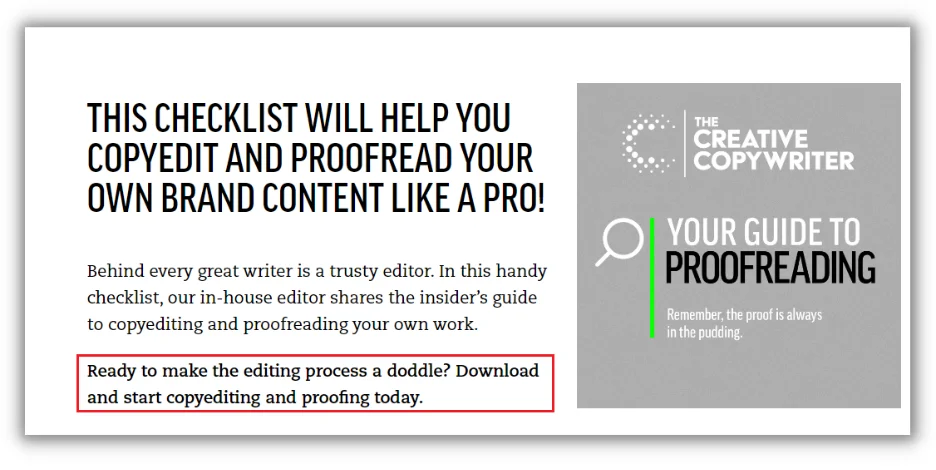

12. Novelty
Appeal to the brain’s attraction to novelty by introducing innovative elements and collaborations.
Please note that the word “new” itself doesn’t work. The trigger will do the job if your offer is truly fresh, unusual, and unique. Think of it as your UVP (unique value proposition).
What makes you different from competitors? What can you do for a customer that they don’t?
13. Reciprocity
The principle of reciprocity suggests that when you provide value to your audience, they are more likely to engage with your brand. Offer free resources, trials, discounts, or personalized recommendations.
The catch is you’ll ask something in return. For example, an email address to send informative newsletters with compelling content, encouraging to buy.
But remember: Reciprocity works when used right. It’s critical to know your limit, especially today when the audience is fed up with tons of “gifts” and offers they find in inboxes daily. Being too aggressive with marketing messages, you risk unsubscriptions and negative reactions.
Be honest and write about what you’ll send users once they share emails with you.
14. Result
The common example is content assets presenting “before” and “after” to users. Photos or videos demonstrating how your product works do the magic!
The trick is to present everything in as much detail as possible so that people can see the difference between the first and second versions.
“Before” and “after” is not the only way to demonstrate results. Case studies do wonders in all niches, too. Working with the same principle, they are the format where you can show results with a text.
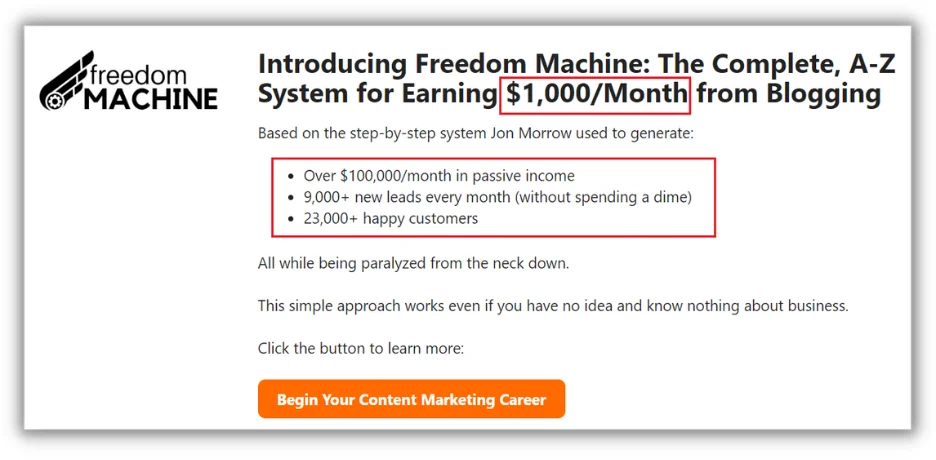

15. Scarcity
Create urgency through limited availability tactics. Ethically use limited quantity, time-limited offers, and scarcity techniques to drive action.
It’s about FOMO again: People don’t want to miss an offer that will be unavailable soon.
Two options here:
- It’s a super popular product/service of extra quality.
- It’s originally for a narrow circle of “chosen ones.”
Scarcity works with any restrictions: color, features, time, date, quantity, cost, etc. When using this trigger, it’s critical to keep your word. If sales close tomorrow, that’s what should happen.
16. Social proof
Use testimonials, endorsements, ratings, and reviews to establish trust and credibility.
Testimonials remain the most popular social proof, but it’s critical to make it trustworthy. Today’s users aren’t as naive as some marketers continue to believe: They won’t trust comments from John Doe with stock photos in avatars.
Share reviews from real people: Make videos, provide active links to their social media profiles, use signed and stamped thank-you letters from partners, etc.
Another instrument to boost social proof for users is your contact information. Many websites hide it, placing nothing but a standard contact form instead.
Wrong.
It hurts E-E-A-T factors and kills user loyalty and trust. Your address, phone number, email, and active social media accounts are worth placing on the website.
Certificates, ratings, budges–all they confirm your expertise and emphasize your responsibility and integrity in customers’ eyes.
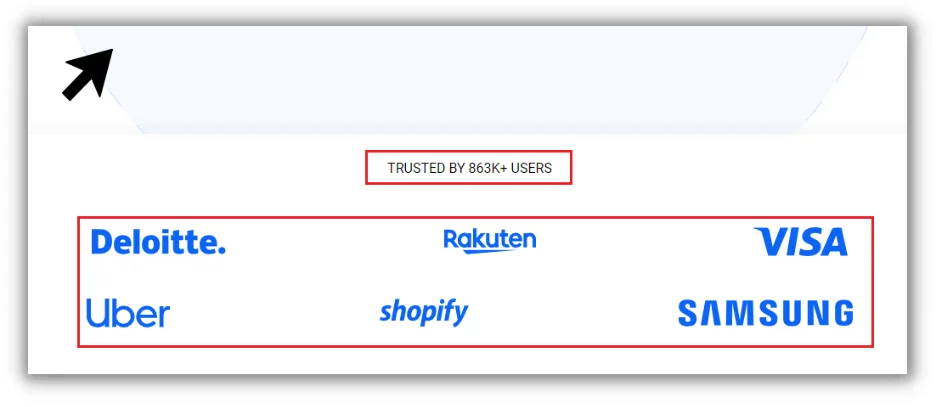

17. Specifics
It’s still an issue for many websites. They continue generating vague content assets, bringing words but no value.
Compare:
- “We sell the best windows in Chicago!”
- “Our energy-saving windows keep 93.4% of heat in your apartment.”
Yes, the example is a little hackneyed, but numbers and facts work better than sophisticated metaphors when it comes to converting traffic into leads.
Even if your niche is info products, customers want to know how long it will take to get results.
18. Storytelling
Harness storytelling’s power to evoke emotions, build connections, and make your brand memorable.
The human brain operates with stories:
- It retains 70% of information through them, while only 10% comes from data and facts.
- It responds better to narratives as they activate brain areas responsible for experiences.
- Combining data with a story increases info retention from 5-10% to 67%.
The secret is that stories don’t impose anything but, at the same time, bring the right idea to readers. Your task is to build a story in a way readers would choose your business over the others.
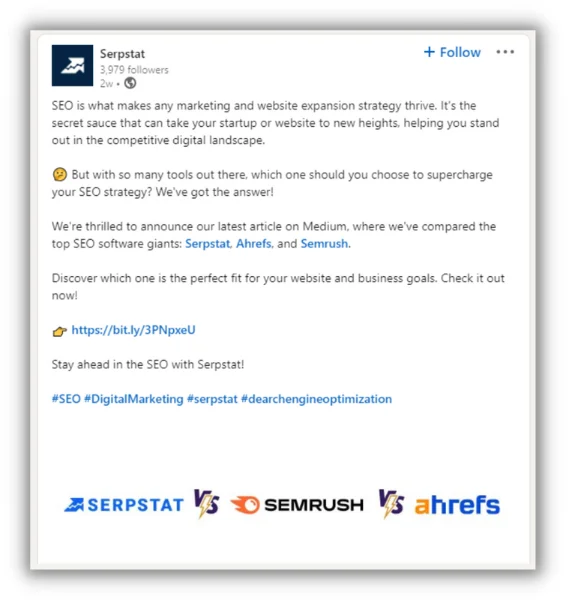

19. Upsell
This trigger serves a specific purpose: Make a customer buy more than they planned.
The oldy-moldy “Buy two–and take the third one for free” hook still works, grabbing even the savvy customers who understand the trick. Indeed, it’s hard to resist the temptation to get a free product.
20. More emotional triggers
Here are some additional emotional triggers you can use in your copywriting:
- Trust: Building credibility and reliability.
- Fear: Tapping into common anxieties or concerns.
- Belonging: The need to be part of a community or tribe.
- Curiosity: Piquing interest to learn more.
- Pride: Targeting one’s self-esteem and accomplishments.
- Guilt: Reminding the audience of a problem or responsibility.
- Urgency: Creating a sense of limited time or availability.
- Relief: Offering a solution to a problem or pain point.
- Anticipation: Building excitement for what’s to come.
- Validation: Confirming a reader’s thoughts or beliefs.
Use neuromarketing responsibly
Neuromarketing offers powerful techniques to enhance your strategies, resonating with audiences. Apply emotional triggers and psychological principles to SEO content and promo campaigns, and the result will surprise you.
But remember: Not all principles are universal, so do your best to test and iterate what works best for your audience.
Explore deeper insights, such as subconscious cues and neural engagement, to refine your strategies further.
About the author
Olesia Filipenko is a seasoned content writer who offers ghostwriting, SEO writing, and blogging services. She works with B2C businesses, providing digital marketing content that increases their search engine visibility. Check out her website WritingBreeze or her LinkedIn to learn more.
PPC
How To Implement Geotargeting in Your PPC Campaigns

Geotargeting has been around for well over a decade, but its recent developments have made it a game-changer in helping marketers reach the right audience and boost online traffic.
Companies all over the world use geotargeting for their pay-per-click (PPC) marketing campaigns to strengthen their strategy and drive new leads. Large corporations like Target and Walmart use geotargeted campaigns to contest against competing establishments.
In this article, we’ll explain what geotargeting is, what it means for your business, and how you can implement a successful strategy.
What is geotargeting?
Geotargeting refers to the practice of pinpointing specific locations within paid search advertising. This approach enables brands to home in on specific users, based on certain attributes and demographics, leading to a more personalized user experience, while avoiding wasted clicks for your business.
The Importance of Geotargeting in PPC Campaigns
Say you’ve burst a tire. Geotargeted advertising allows you to search for tire companies relevant and convenient to your location, instead of suggesting the No. 1 tire provider in the United States. This strategy enables local businesses to grow and proposes direct solutions for consumers.
Geotargeting is important for all business types but B2C organizations are likely to benefit the most. Google’s enhanced map search means consumers can discover local businesses in the area, raising brand awareness and generating new trade opportunities.
For B2B companies, location-based marketing allows them to geotarget city areas with a high volume of established organizations, such as business parks. This avoids wasting advertising budget in nonessential areas. SaaS businesses, on the other hand, should consider geotargeting with a focus on countries as opposed to specific locations.
It’s important to have some sort of geotargeting in place to avoid reaching irrelevant customers and wasting your budget.
Key Benefits of Geotargeted Advertising
Geotargeted advertising is the key to a strong PPC marketing campaign as it has many advantages to offer businesses. Some of the plusses include:
Enhanced Personalization
Ads perform better if they resonate with consumers. The precise nature of geotargeting means businesses can market to hyper-specific audiences and tap into the culture of a locale. According to McKinsey’s Next in Personalization report, 76% of consumers say they’re more likely to purchase from brands that personalize their content. By customizing geotargeted copy to consumers from various locations, you can achieve better click-through rates, cheaper cost per click and gain more relevance on your ad rank, which plays a significant factor in how Google determines your search engine results rank.
Cost-Effectiveness
PPC advertising can be expensive. Every time an irrelevant consumer clicks on your ad, it eats into your budget. Geotargeting allows you to control costs and stay within cost parameters. If your business only provides services within your region, you won’t benefit from promoting your brand elsewhere. With this location-based marketing solution, you can save money and ensure you reach the right customers.
Map Feature Perks
Geotargeting your ads is the only way to gain relevance on map applications. When local neighborhood or city consumers conduct a map search, geotargeting allows you to show up as an option for popular mobile apps, such as Google Maps and Yelp.
Setting Up Geotargeted Advertising in Google Ads
Thinking of implementing geotargeting into your PPC campaign? Here’s how you get started:
Step 1: Define Your Budget and Target Audience
The first step to creating a PPC geotargeting strategy is to set your spending boundaries and identify your intended audience. When breaking down the key aspects of your brand’s ideal consumer, don’t stop at “who.” Consider:
- Occupation: What industries are they likely to work in?
- Age: What age range are your ideal consumers?
- Lifestyle: Are they married adults, parents, students or someone else?
- Online activity: What time of day do they tend to be online?
Breaking down your target audience will help you segment your audience and identify common attributes towards which you can focus your efforts.
Step 2: Identify Relevant Locations
Use your own data to determine which locations are the strongest for your brand. You can then target regions that achieve the highest basket value (for e-commerce companies), or the areas that produce the strongest leads.
Step 3: Use Google Ads Targeting Features
Before Google’s ad targeting features entered the picture, businesses would target generic locations, like downtown areas. With Google’s advancements, marketers can refine their strategy to reach consumers with specific attributes. There are multiple audience-targeting features you can use for a successful PPC campaign:
Location targeting options: Filter by state, country, city, zip code, DMA and language. It’s always recommended to use a geofilter for campaigns.
Advanced targeting techniques: Filter by income, parenthood, education, business size, hobbies and interests.
Step 4: Customize Ad Content for Various Locations
Make sure to tailor your ad collateral where possible. Adapt your campaign’s copy and imagery to align with the values of the locale you’re targeting. For example, you might mention the Cubs when addressing Chicago audiences. Region-specific references will help endear consumers for better conversion.
Step 5: Track and Measure Performance
It’s essential to note that geotargeting isn’t simply the silver bullet to generating leads. It’s an incredibly effective tool that’s leveraged through careful customer analysis, thorough strategic insight and unification of the content, keywords and geography.
Aim to check in and make adjustments to your campaign on a daily or weekly basis. If you’re spending less than $1k per month, then weekly will suffice. Any more than that, you should consider checking daily. Only by being proactive can you expect to receive exceptional results from your PPC campaign.
Integration Within Your Overall Marketing Strategy
Geomarketing complements other marketing channels, like email, social media and SEO landing pages. SEO and PPC helps to boost traffic and gain more attention to high-value content. PPC ads, when run alongside social media and email channels, helps to run a broad campaign around a particular trend or holiday.
Geotargeted PPC content lets users follow up on your promotions online after seeing them advertised elsewhere. Making your content easy to find will help build customer engagement on your site.
Best Practices for Geotargeted PPC Advertising
You don’t need to learn geotargeting the hard way. Some helpful tips to get you off on the right foot include:
- Start With Geotargeting — Then Expand
If you’re getting started with geotargeting, try to avoid overcomplicating things. Stick to areas with the highest sales interaction before expanding. Say you’re planning to promote your services across the U.S.; consider beginning with the top 10 highest-performing states based on your company’s sales and engagement insights to set the foundations. - Translate Your Content
If you want to target audiences in Germany, you may want your copy to undergo German localisation before launching your marketing campaign — and better sooner than later. Although English is a shared language among many countries in the world, copy and keywords in your target audience’s first language makes your content more likely to reach consumers through the search engine. It also allows you to convert local audiences by connecting with them on a first-language basis. - Pick 3 Key Audience Attributes
Once you’ve created a clear geotargeting strategy, the next step in optimizing your search engine outreach is to segment your customer base into 3-5 common attributes. You might expect your audience to be in higher education, have children or work at a large-scale company. Identifying these features enables you to target specific types of individuals that match your brand’s vision of the ideal customer.
Major Takeaways
Geotargeting is the number one way to optimize your PPC campaign, regardless of whether you’re working with a six-figure monthly budget or a thousand-dollar one. It saves wasted clicks and valuable budget, ensuring your business attracts consumers that successfully convert sales.
Whether you’re looking to reduce costs, stop overspending, or want to stretch your limited budget further, this location-based marketing approach provides an all-encompassing solution for your PPC initiatives.
PPC
Critical Display Error in Brand Safety Metrics On Twitter/X Corrected

In a recent public statement on Twitter, Linda Yaccarino, CEO of X, highlighted a critical error in the display of the company’s Brand Safety Rate which was provided by DoubleVerify, a third-party company known for verifying brand safety metrics.
The error, identified in the graphical display of the Brand Safety Rate on X’s dashboard, persisted for nearly five months, from October 24, 2023, to March 14, 2024. During this period, the dashboard erroneously displayed a significantly lower Brand Safety Rate, which sharply contrasted with X’s actual rate. According to the statement, the true Brand Safety Rate for X has consistently exceeded 99.99% since October 2023, a figure that surpasses global benchmarks for brand safety across all campaigns, as per DoubleVerify’s global industry data.
Brand Safety Rate refers to a metric used to measure the extent to which a brand’s advertising efforts appear in environments that are deemed safe and appropriate, aligning with the brand’s values and standards. This rate is crucial for ensuring that ads do not appear alongside content that could harm the brand’s reputation.
DoubleVerify has accepted full responsibility for this oversight, acknowledging the display of incorrect and misleading safety rates on X’s dashboard. They have assured that they have communicated the error to the affected advertisers and have corrected the display to accurately reflect the current and retroactive Brand Safety data for X.
Yaccarino assured advertisers on social media platform, that immediate actions are being taken to rectify this issue in collaboration with DoubleVerify to ensure that all clients receive accurate and reliable information. She also mentioned that the X team, along with DoubleVerify support, will reach out to advertisers who may have made business decisions based on the erroneous data.
This situation underscores the critical importance of accurate data representation in digital marketing and the potential consequences of data inaccuracies on business decisions. It serves as a cautionary tale for all involved in paid social advertising and emphasizes the need for continuous vigilance and rigorous verification processes to maintain the integrity of marketing metrics.
Of course this follows a number of issues where paid social advertising platforms have shared incorrect data with advertisers leading to concerns about measurement accuracy and transparency.
Here are a few notable examples:
Facebook Video Metrics Issue: In 2016, Facebook admitted to overestimating average viewing time for video ads on its platform for two years. This error reportedly inflated the average viewing times by 60-80%, which could have misled advertisers about the performance of their video ads on the platform.
Twitter Ad Billing Error: In 2016, Twitter disclosed a bug in its Android app that led to overcharging advertisers over a month-long period. The bug affected campaigns using the feature that charges advertisers for the first engagement with a campaign each day but instead charged them for engagements that occurred afterwards as well.
These incidents highlight the importance of accuracy in digital advertising metrics and underscore the need for ongoing vigilance by both advertisers and platforms to ensure data integrity and transparency. Such errors can have significant financial implications and can affect strategic decisions made by advertisers and we can’t always trust the data shared with us by platforms 100%.
-

 WORDPRESS7 days ago
WORDPRESS7 days ago10 WordPress Influencers to Follow in 2024 – WordPress.com News
-

 SEARCHENGINES7 days ago
SEARCHENGINES7 days agoGoogle Image Search Adds Pixel Level Object Segmentation Animation
-

 MARKETING7 days ago
MARKETING7 days agoFeeling Stuck: What to Do When You Don’t Know What to Do
-

 PPC5 days ago
PPC5 days agoA History of Google AdWords and Google Ads: Revolutionizing Digital Advertising & Marketing Since 2000
-

 SEARCHENGINES6 days ago
SEARCHENGINES6 days agoMore Google March 2024 Core Update Ranking Volatility
-

 PPC6 days ago
PPC6 days agoCompetitor Monitoring: 7 ways to keep watch on the competition
-

 PPC5 days ago
PPC5 days ago31 Ready-to-Go Mother’s Day Messages for Social Media, Email, & More
-

 WORDPRESS6 days ago
WORDPRESS6 days agoThrive Architect vs Divi vs Elementor















You must be logged in to post a comment Login